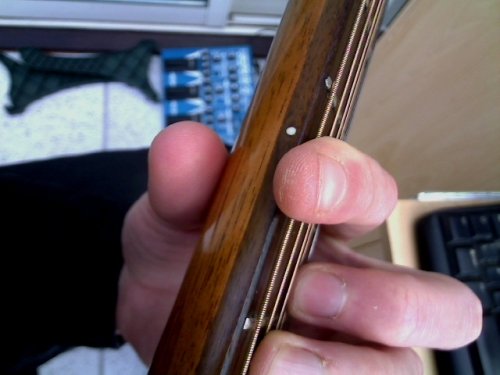It’s hard to avoid developing bad habits when you’re learning to play the guitar on your own.
You probably won’t even know you’re doing something wrong until it’s too late - the habits have become so deeply ingrained in your guitar-playing that correcting them becomes close to impossible.
So take a moment to assess your playing and see whether you’re doing any of these bad guitar habits so you can start unlearning them right away.
1. Not Practicing On A Regular Basis
The number one bad habit that many new guitar players have is skipping practice sessions or not setting aside a regular time for practice.
Playing guitar is a skill best mastered through constant practice - you simply won’t be able to get better at your playing by just watching videos or reading instructional materials You have to apply what you’ve learned, and you have to make a habit of it.
It’s important to make playing the guitar a part of your daily routine, even if it’s just for 15 minutes a day. If you skip practice or do your exercises and drills once a week, by the time you sit down again you will have already forgotten most of what you’ve done. Short but productive practice sessions are still way better than not practicing at all.
Incorrect Position Of Fretting Hand Thumb
A common mistake beginner guitarists make is positioning their fretting hand thumb in such a way that their thumb reaches over the top of the neck, or pointing to the left along the guitar’s neck.

These incorrect thumb positions limit your flexibility and you won’t be able to play some open chords at all.
To correct this, position your thumb in the middle of the back of the neck when playing, and make sure it is pointing up rather than to the side (see image).
You’ll notice you now have more room to stretch the rest of your fingers around the neck, allowing for a greater range of chords to be played.
Playing A Guitar That’s Out Of Tune
More often than not, beginners who don’t use a tuner or don’t know how to tune their guitar end up playing with an out-of- tune instrument.
Playing a guitar that’s out of tune is one of the most seriously bad habits you can do as it hinders you from developing an ear for the right pitch. If your guitar is properly tuned, your brain will remember the sound and you will be able to recognized when a note is off so you can correct it.
Invest in a good-quality electronic tuner and learn to use it for tuning your guitar. Alternatively, you can download one of the many free apps available on Android and through the App store.
Check and adjust your tuning before and after playing and remember the difference so you can eventually learn to tune by ear.
Slow Finger Placement
Beginners first learning chords tend to place one finger at a time to make chord shapes. This is a bad habit because it slows your playing down and makes it harder for you to make chord changes.
It also makes you rely on the visual aspect in which you’ll always need to look at the strings to see if you’re putting your fingers on the right ones.
To correct this, put your fingers on the note, play it then lift your fingers off the strings while keeping the same chord shape.
Put your fingers down again and repeat until your fingers get used to making the shape and hitting the strings all at the same time. This will trigger your muscle memory and make changing chords easier and quicker.
Unlearning these common habits early on will help you play the guitar better and in the proper manner. Doing things right the first time will save you the frustration of having to correct these later on when it would be challenging, if not impossible, to get rid of.
